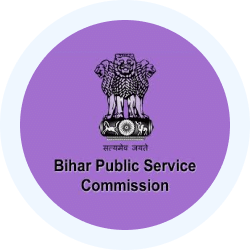Revision Notes: Cabinet Mission Plan - BPSC (Bihar) PDF Download
Central and Provincial elections during 1945-46 in India revealed the popularity of Congress and Muslim League. Congress go-vernments formed in 8 provinces viz., Assam, Bihar, U.P., N.W.F.P., Bombay, Madras, C.P. and Orissa. Muslim League governments formed in Bengal and Sind. Unionist Party of Hindus, Muslims and Akali Sikhs formed government in Punjab.
Factors which led to cabinet Mission Plan can be summed up as follow:
- The Labour Government under Attlee assumed office in England replacing Conservative Government of Churchill in July, 1945.
- Wavell announced Labour Government’s decision to introduce early responsible government in India on 19 Sep. 1945.
- International pressures on England for early grant of independence to India.
- The Naval Mutiny of Feb. 1946 gave an indication of the difficulties that confronted British administrators in India.
- The depletion of Britain’s civil and military resources in India after World War II lent urgency to transfer of power to Indian hands.
- National spirit had permeated all wings of armed forces and even the police and their loyalty to Government of India was always doubtful.
- Indian elections of 1945-46 revealedthat Muslim League dominated Muslim opinion as Congress dominated Hindu opinion.
- A British Parliamentary Delegation, after visiting India during the winter of 1945-46, recommended to Labour Gove-rnment that Indian freedom could not be delayed.
Attlee explained (on 15 March 1946) the British policy towards India:
- British Government aware of the rights and apprehension of Indian minorities.
- Minorities not to be allowed to place veto on the advance of Majority.
- Cabinet Mission to visit India to help India to attain freedom speedily.
- Cabinet Mission comprising Pethick-Lawrence,Cripps and Alexander reached India On 24 March 1946.
Recommendation of Cabinet Mission
Rejection of Demand for Pakistan
- Problem of communal minorities could not be solved because of large % of non-Muslims in the proposed north-west & north-eastern wings of Pakistan.
- Population of Muslim minorities in the rest of India would be 2 crores.
- Unitary nature of British Indian administrative, economic and military set-up was an argument against partition.
Union of India recommended
- British India and Indian States to have a common union to deal with Defence, Foreign Affairs and Communications.
- Indian Union to have an Executive and a Legislature. Provision made for solution of communal issues.
- Indian States to retain all subjects and powers not ceded to the Union Centre.
- Residuary powers vested in provinces.
- Provinces free to form groups with separate sub-constitutions.
Provision for formation of Constituent Assembly
- Provincial Legislative Assemblies to elect representatives for Constituent Assembly.
- Constituent Assembly to conclude treaty with Britain.
- British Paramountcy over States to lapse.
Proposal for Interim Government
- Interim national government of India to be formed.
Merits of Cabinet Mission Scheme
- Constituent Assembly to be formed on democratic basis of population.
- Communal issues to be decided by simple majority.
- Demand for partition of India rejected.
- British Government and non-official Europeans denied representation in Constituent Assembly.
- Constituent Assembly given wide powers to frame a constitution for free India.
Demerits
- Interest of Muslim minority looked after, but of Sikhs ignored.
- Formation of separate groups could trigger off separatist tendencies.
- Provision for separate sub-constitutions for provinces and groups encouraged those who wanted Pakistan.
Muslim League rejected the Cabinet Mission Plan as also Constituent Assembly Plan on 29 July, 1946.
Criticism of the Plan
- The Congress accepted the plan on June 25, 1946. The Muslim League resented the absence of Pakistan, but later, on June 6, accepted it as containing the substance of Pakistan.
- The Sikhs, though critical of the plan, ultimately accepted it after an assurance from the congress that their interests would not be ignored.
- The Hindu Mahasabha resented compulsory Grouping and a possibility of the division of the country at some future date.
- The Communist Party objected to in Communal provisions, composition and the limitations on the powers of the Constituent Assembly.
- The elections to the Constituent Assembly proposed under the plan were held. Inthese elections the congress captured 199 seats out of the total of 210 General seats. Out of the total of 296 seats allotted to the British India, the congress captured 211 seats and the Muslim League 73. The Muslim League rejected the plan on June 29, 1946.
FAQs on Revision Notes: Cabinet Mission Plan - BPSC (Bihar)
| 1. What was the Cabinet Mission Plan? |  |
| 2. What were the main features of the Cabinet Mission Plan? |  |
| 3. How did the different religious communities react to the Cabinet Mission Plan? |  |
| 4. Did the Cabinet Mission Plan lead to the independence of India? |  |
| 5. What were the challenges faced in implementing the Cabinet Mission Plan? |  |

|
Explore Courses for BPSC (Bihar) exam
|

|


















